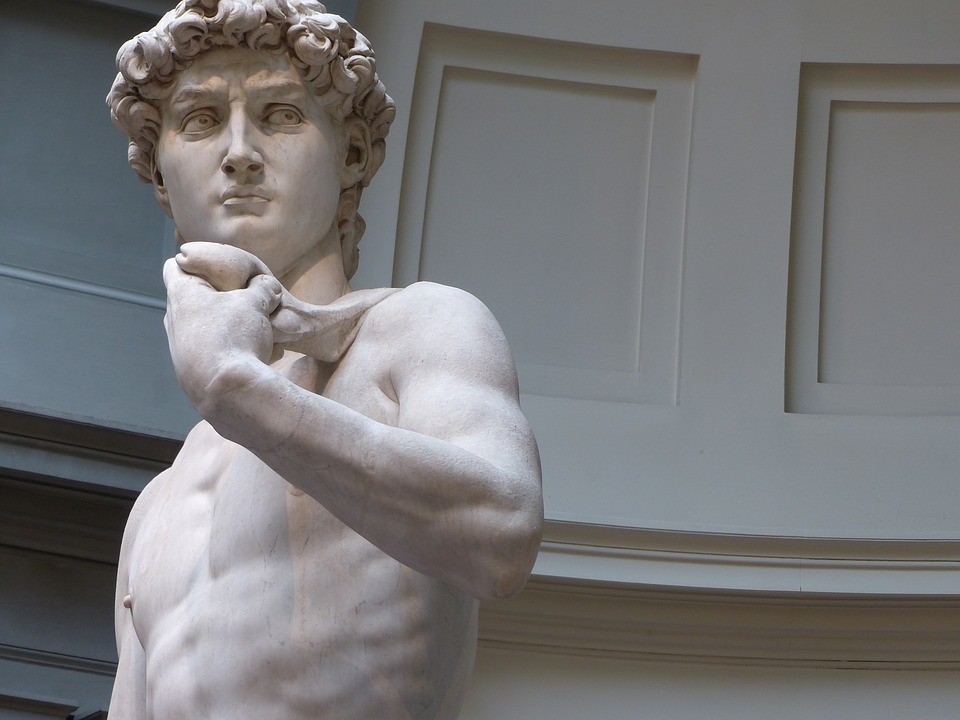Many readers are familiar with Michelangelo’s famous sculpture of the Biblical David which still stands in Florence, Italy. It is viewed by many as an artistic masterpiece that has survived earthquakes, riots, lightning strikes, vandals, and every outdoor statue’s worst enemy: pigeons.
What many do not know is the incredible story behind this famous work of art. Roughly 35 years before the now-famous sculptor began this masterpiece, the large block of Carrara marble from which it has been carved had been selected by another artist, Agostino di Duccio. This sculptor was previously commissioned to complete this statue for the Cathedral in Florence and he cut a tall rock block that had many veins, small holes, and other defects.
When the quarry shipped the enormous stone to Florence and Duccio examined it more closely, he realized his mistake and abandoned the project. Ten years later, another sculptor attempted the work but also quit when he discovered the stone’s defects and limitations.
This large hunk of unusable rock lay abandoned for another 25 years until Michelangelo tackled the job. Using what he had available, he designed the statue accordingly and made David’s body twist to accommodate the stone’s imperfections. The artist crafted the dimensions and posture of the figure to maximize the rock’s potential and achieve the ideal product while eliminating and minimizing its weaknesses.
Five hundred years later this artistic masterpiece continues to amaze visitors who travel from all over the globe to behold its beauty and charisma. It is so lifelike that it appears as if David will step off his pedestal at any moment to go take down Goliath.
This achievement by Michelangelo is considered one of his greatest works although many others certainly compete for top honors. Nevertheless, it is a testament to his genius, skill, and resourcefulness to use what he was given and create something of incredible splendor.
The backstory of this famous piece of art is a glimpse of what God does with His children. When we come to Him, we are often broken by life, stained beyond cleaning, and full of defects and holes. We have no beauty to attract Him to us. Any other sculptor would quickly reject the challenge of creating anything valuable from such worthless raw material.
God, however, is the Master Craftsman. He purchases us with the blood of His Son and then goes to work on us. He begins to chisel away all that mars the image He desires to create as He removes our sin as well as our evil desires. Thankfully He doesn’t require perfect or even promising materials but works with whatever we are and maximizes our potential.
Some of His work is painful for unlike the lifeless marble, we sense the hurt as old habits and cherished sins are chipped off. Another breakdown of the analogy occurs at the point of choice. In contrast to the inanimate stone we can easily resist the Artist’s work and draw back from His chisel. We can shield parts of our lives we don’t want Him to touch.
We strive against Him to our own detriment, however. He has the perfect outcome in mind and knows exactly which blows are necessary to achieve it. Since we can do nothing to improve our own lot, we are wisest when we surrender to the Sculptor and allow One with far superior skills than Michelangelo to do His work.
Michelangelo had been commissioned to carve a saint out of scrap. He took what he had available and created an artistic masterpiece that has enriched our world while representing a famous saint.
The challenge our Heavenly Father faces is very similar only much harder. But if we yield ourselves to His hammer and cooperate with His chisel, we will eventually become that for which He purchased us. I pray that we will trust Him fully knowing He has our best interest as His motive and that He loves us more than any sculptor could love any stone.
Blessings, George
